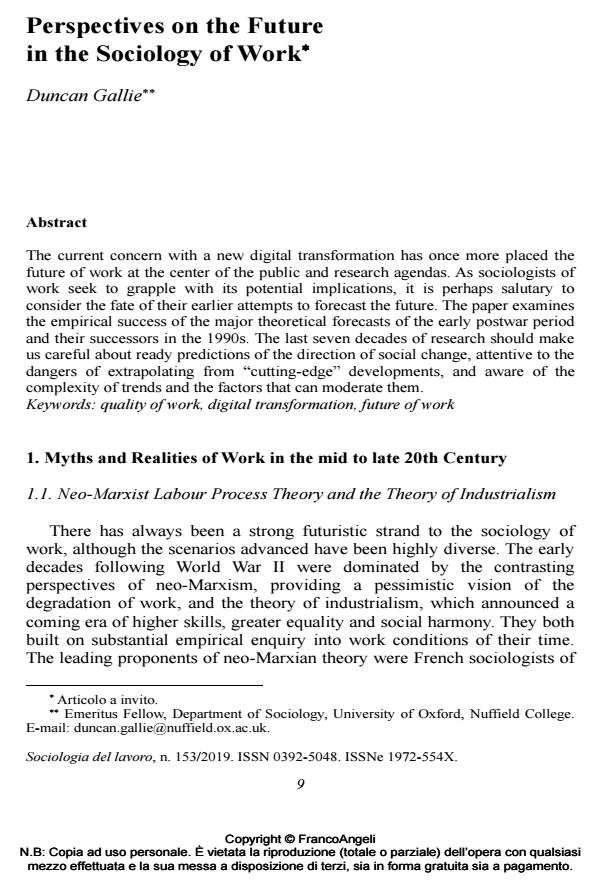Perspectives on the Future in the Sociology of Work
Journal title SOCIOLOGIA DEL LAVORO
Author/s Duncan Gallie
Publishing Year 2019 Issue 2019/153
Language English Pages 23 P. 9-31 File size 298 KB
DOI 10.3280/SL2019-153002
DOI is like a bar code for intellectual property: to have more infomation
click here
Below, you can see the article first page
If you want to buy this article in PDF format, you can do it, following the instructions to buy download credits

FrancoAngeli is member of Publishers International Linking Association, Inc (PILA), a not-for-profit association which run the CrossRef service enabling links to and from online scholarly content.
The current concern with a new digital transformation has once more placed the future of work at the center of the public and research agendas. As sociologists of work seek to grapple with its potential implications, it is perhaps salutary to consider the fate of their earlier attempts to forecast the future. The paper examines the empirical success of the major theoretical forecasts of the early postwar period and their successors in the 1990s. The last seven decades of research should make us careful about ready predictions of the direction of social change, attentive to the dangers of extrapolating from "cutting-edge" developments, and aware of the complexity of trends and the factors that can moderate them.
Keywords: Quality of work, digital transformation, future of work
- Non di solo pane? Qualità del lavoro e soddisfazione per il proprio impiego: un approccio multidimensionale Tania Parisi, in SOCIOLOGIA DEL LAVORO 161/2021 pp.148
DOI: 10.3280/SL2021-161008 - Rileggere gli occupati e i disoccupati. Note a partire dai volumi I paradossi della disoccupazione, di A. Accornero e F. Carmignani, Sociologia della disoccupazione, di E. Pugliese, Se tre milioni vi sembrano pochi, di L. Gallino Andrea Ciarini, in SOCIOLOGIA DEL LAVORO 154/2019 pp.225
DOI: 10.3280/SL2019-154012
Duncan Gallie, Perspectives on the Future in the Sociology of Work in "SOCIOLOGIA DEL LAVORO " 153/2019, pp 9-31, DOI: 10.3280/SL2019-153002